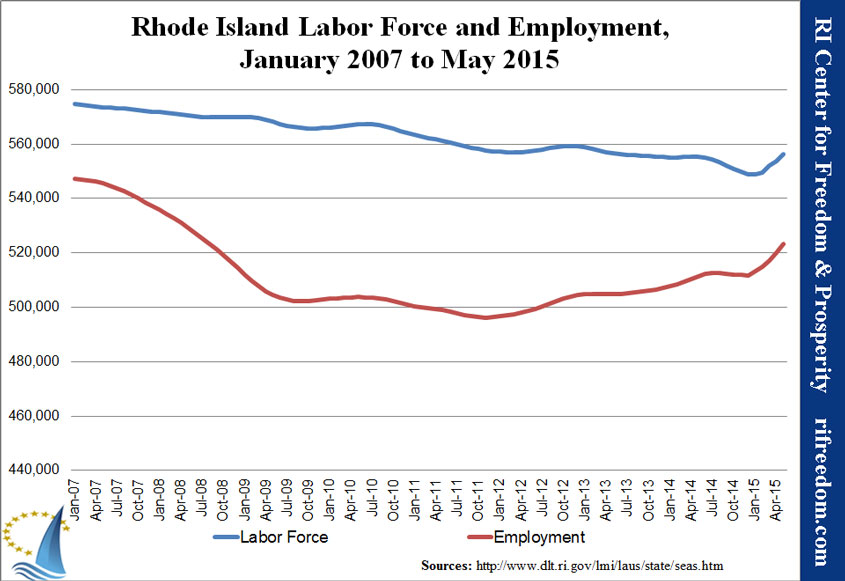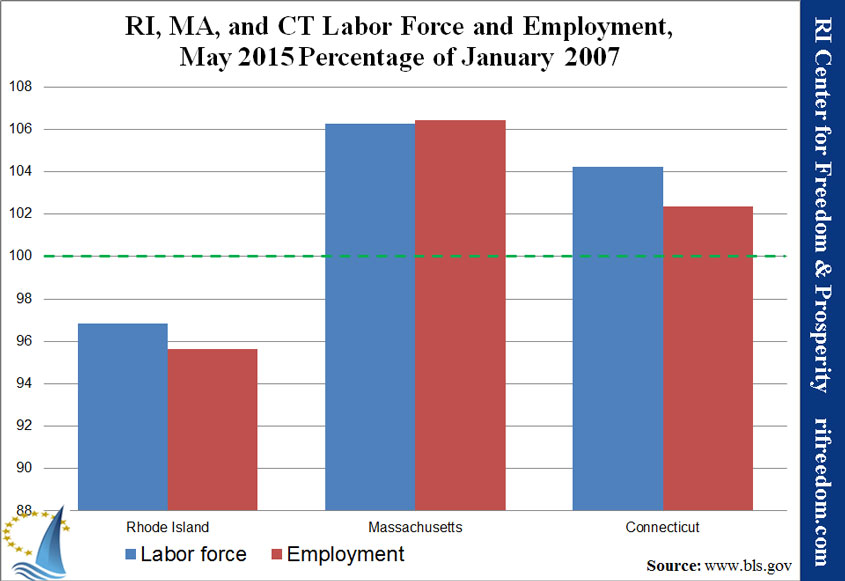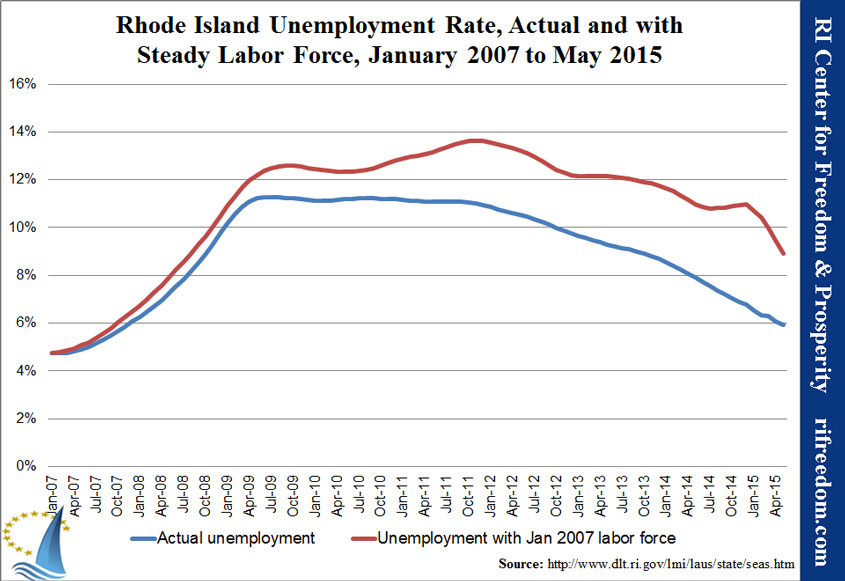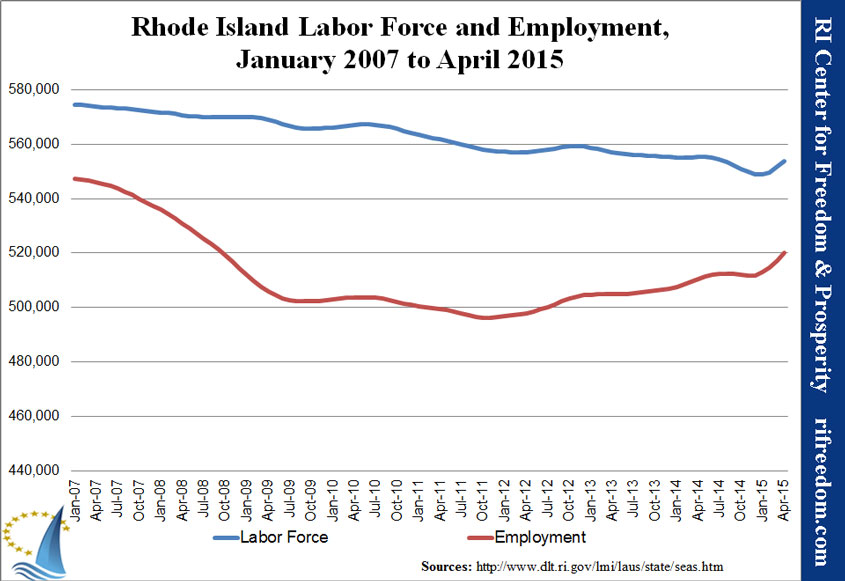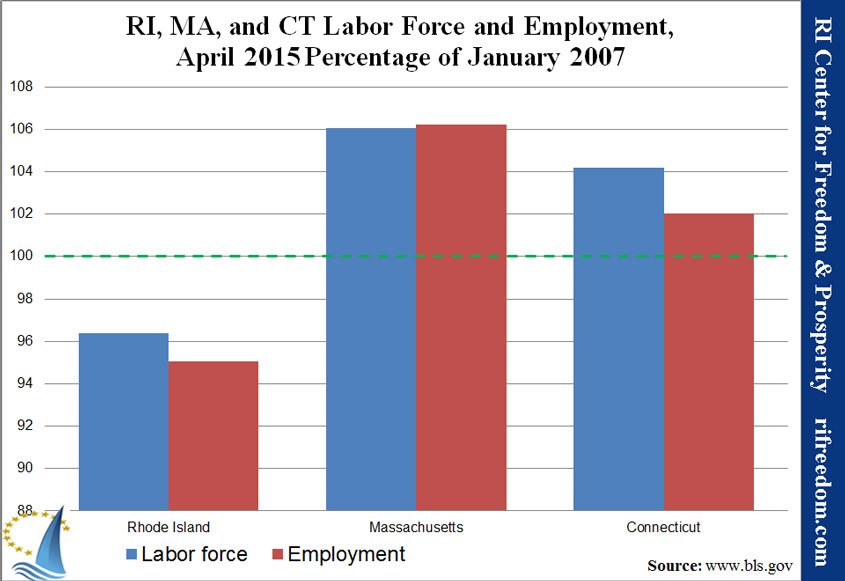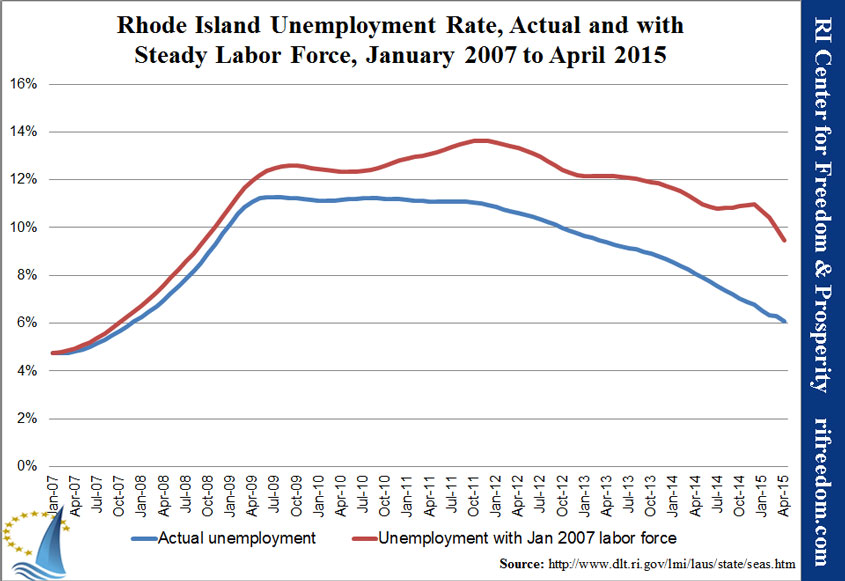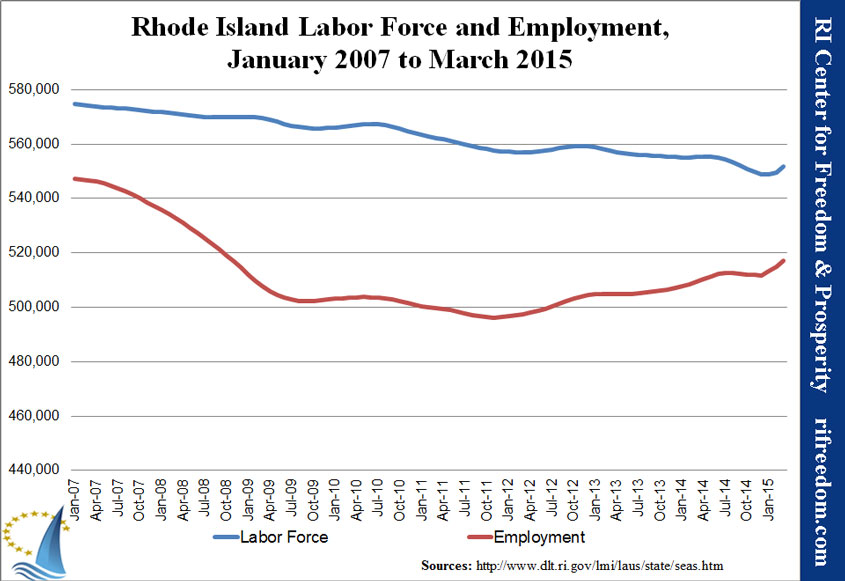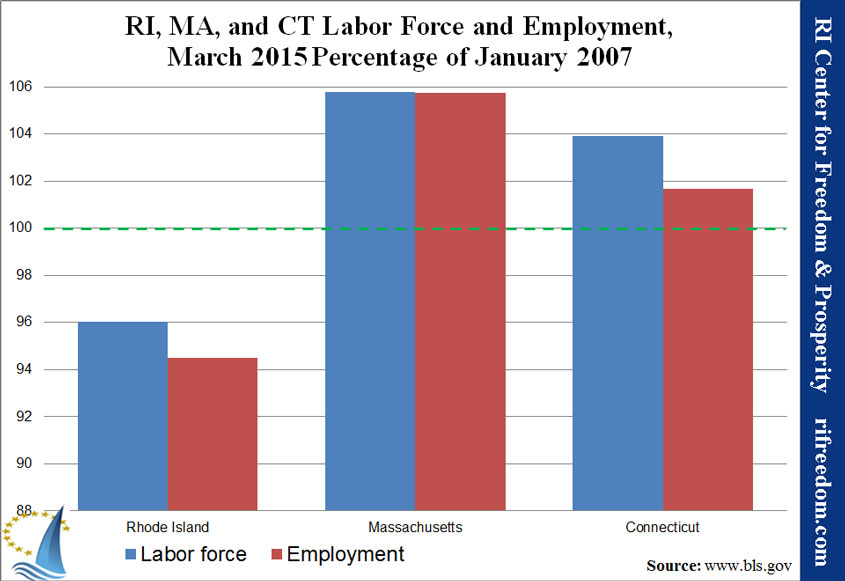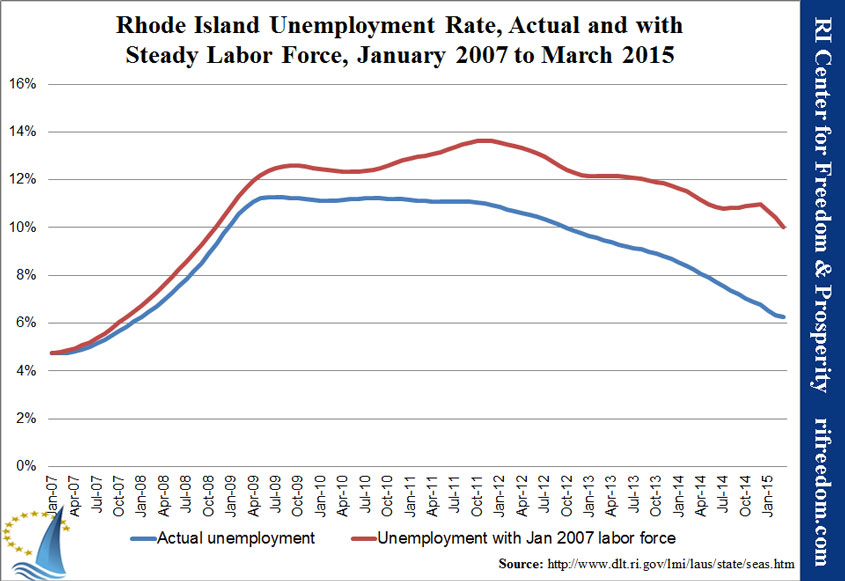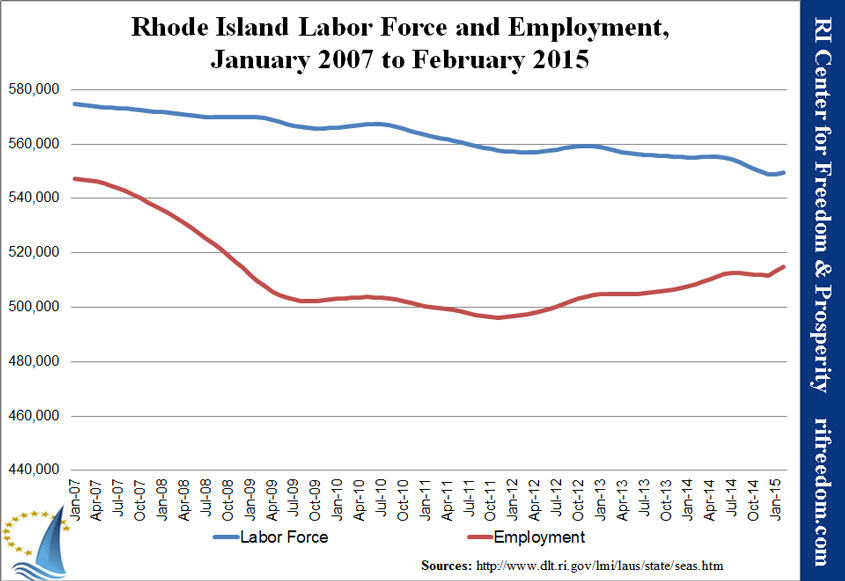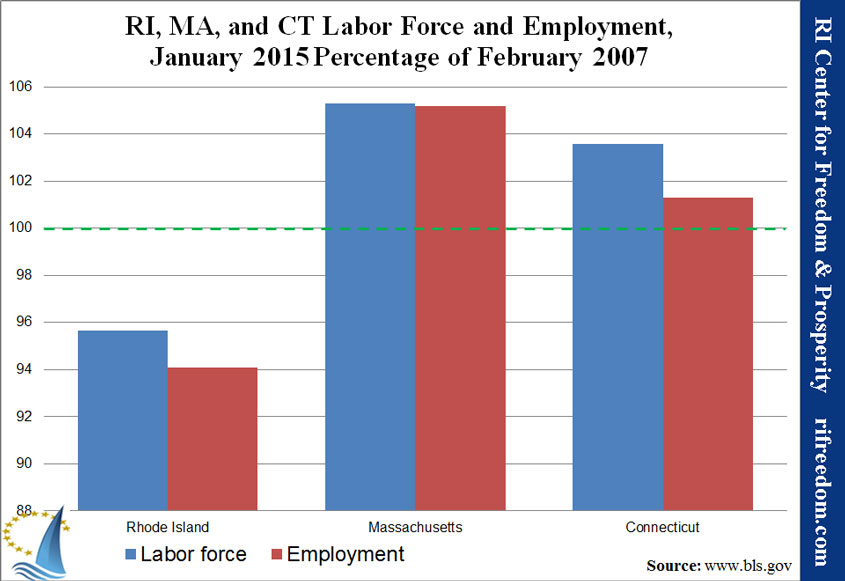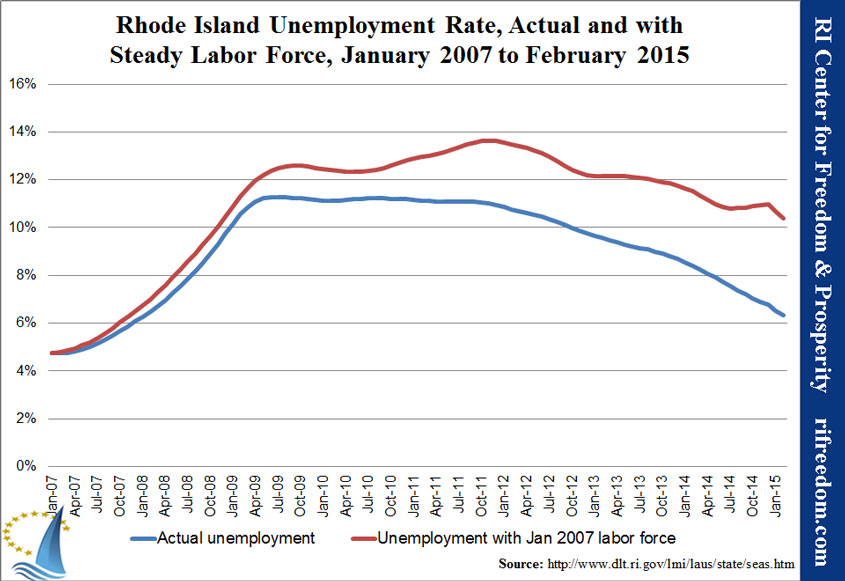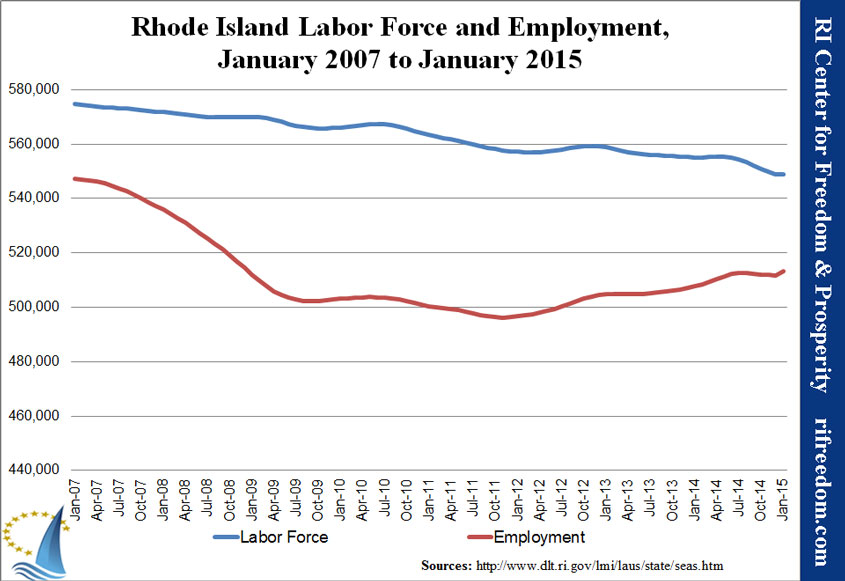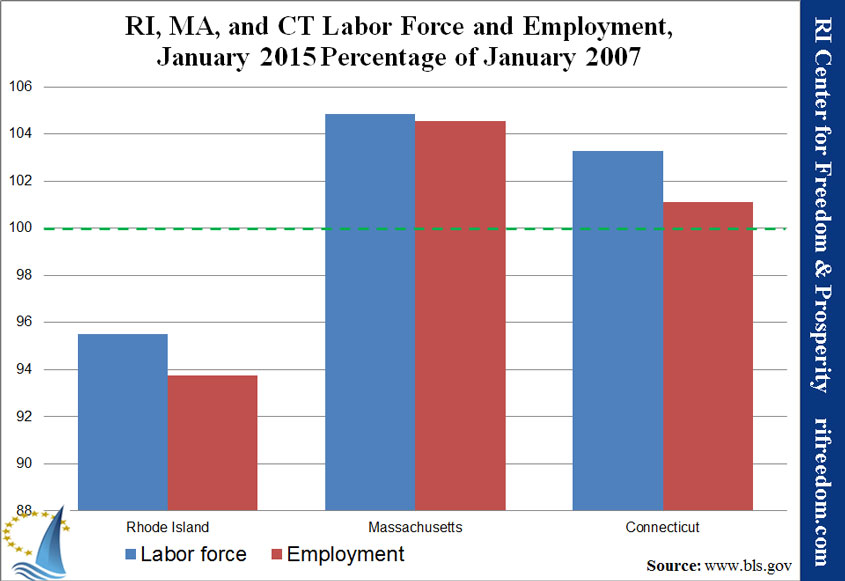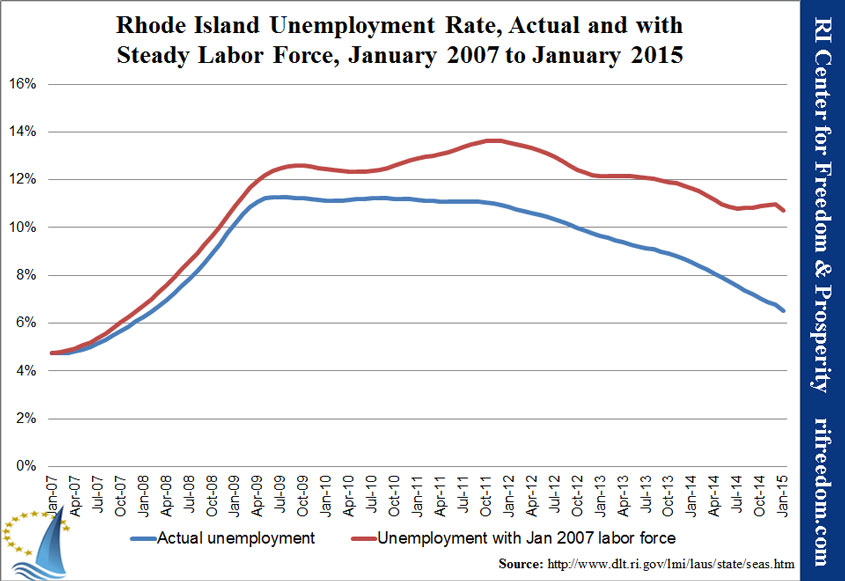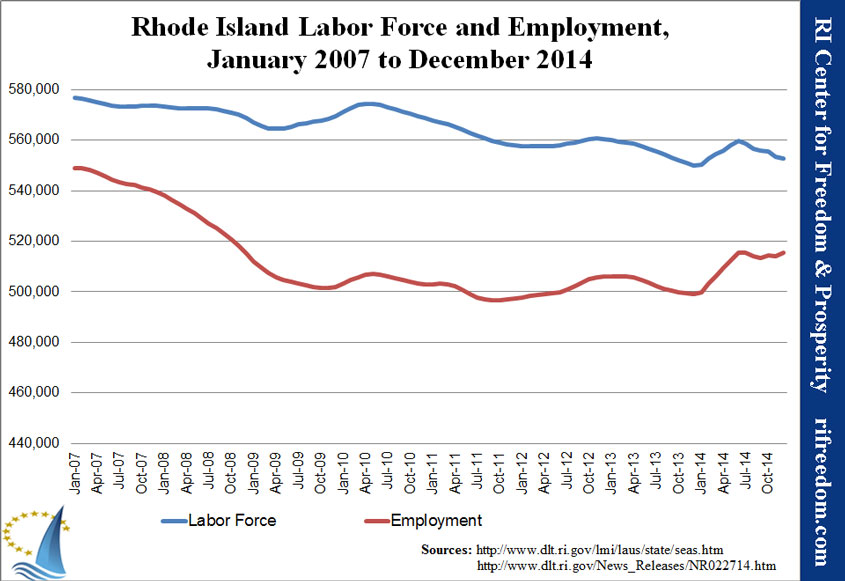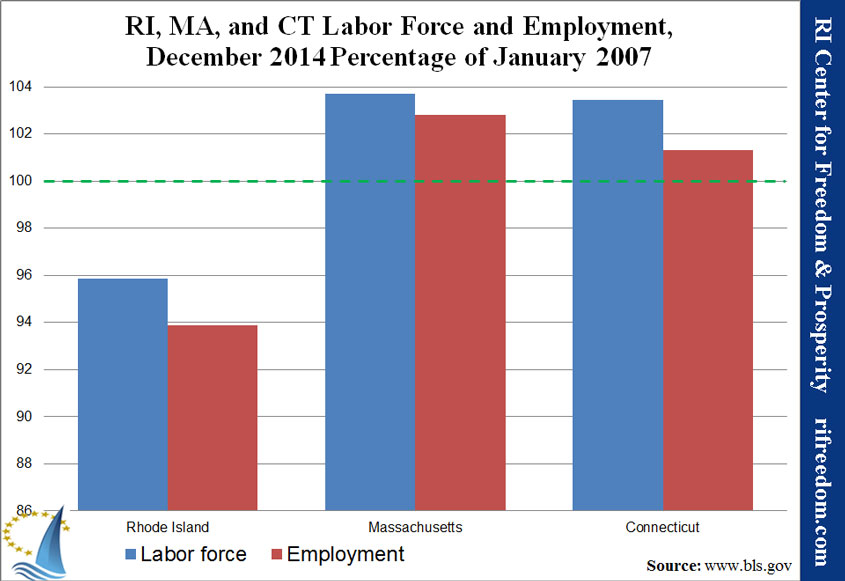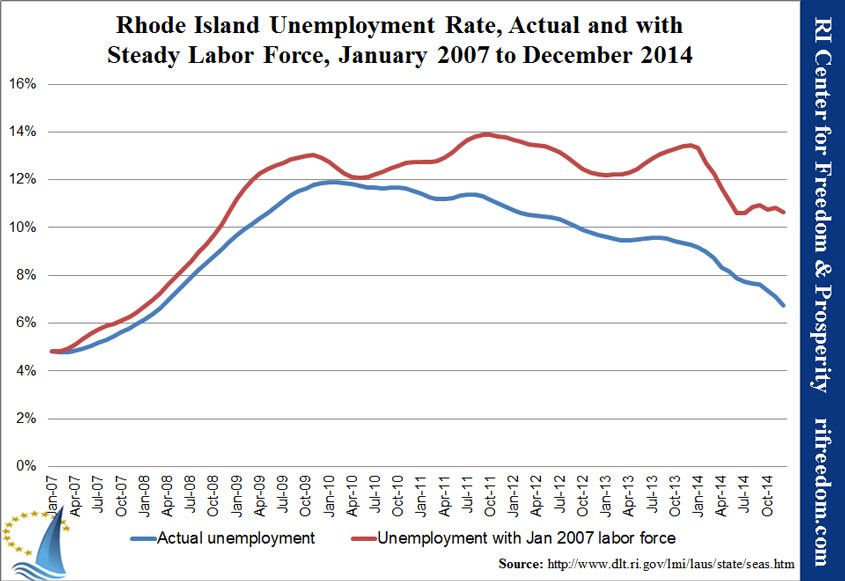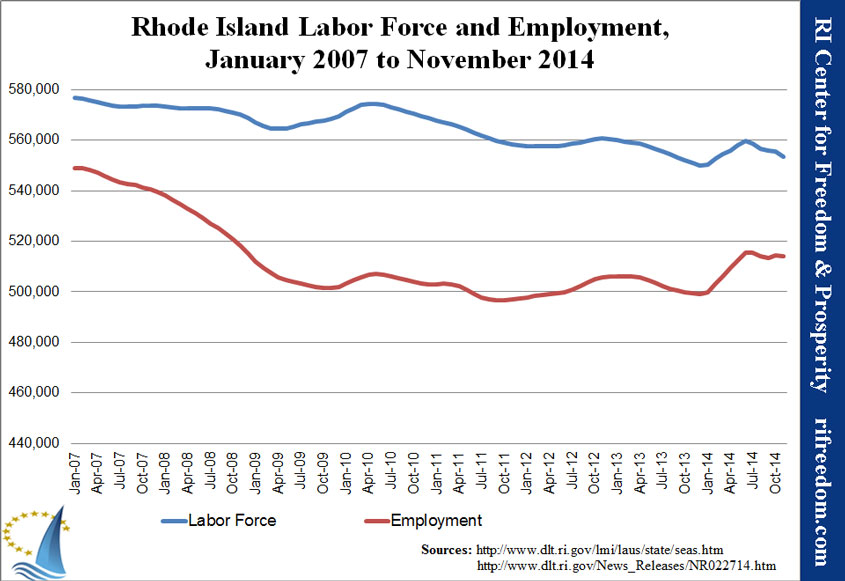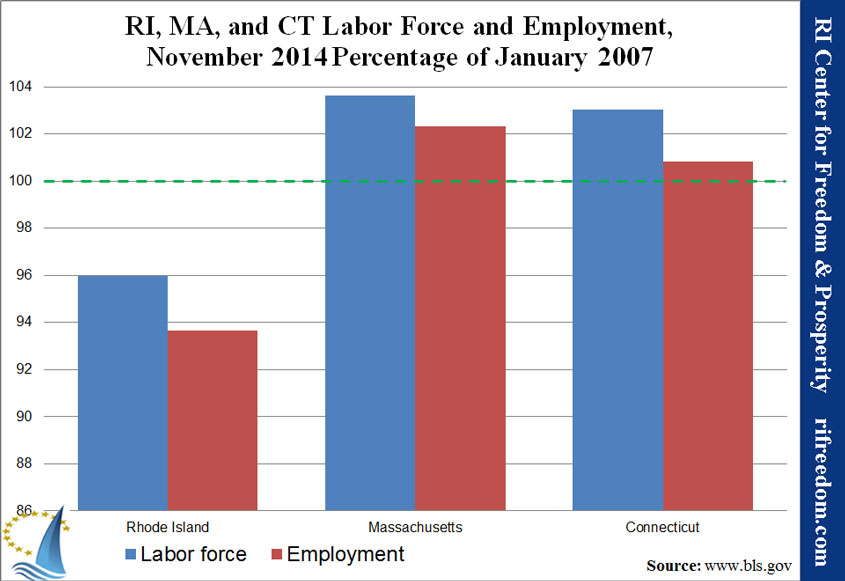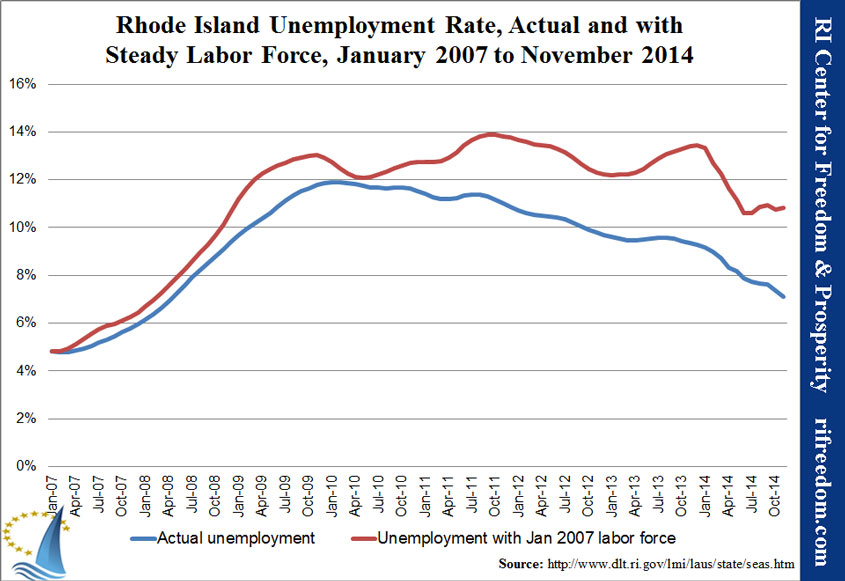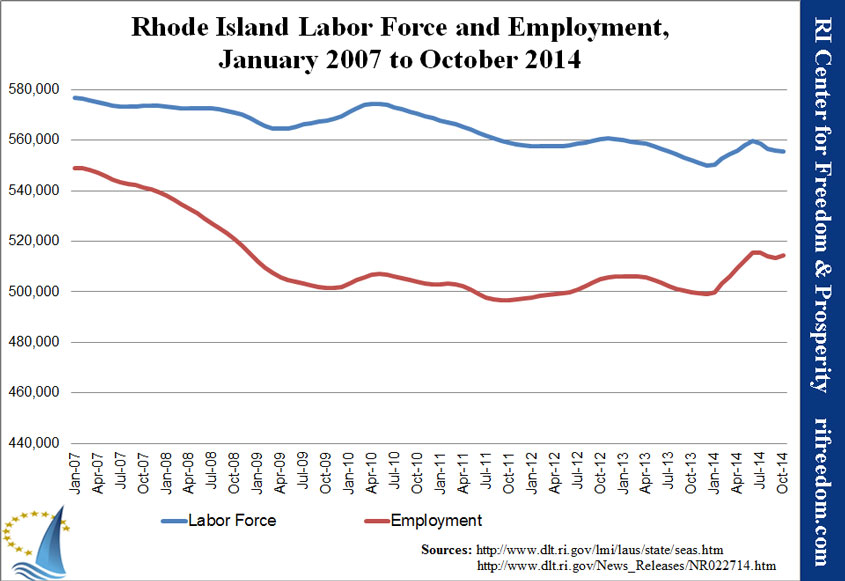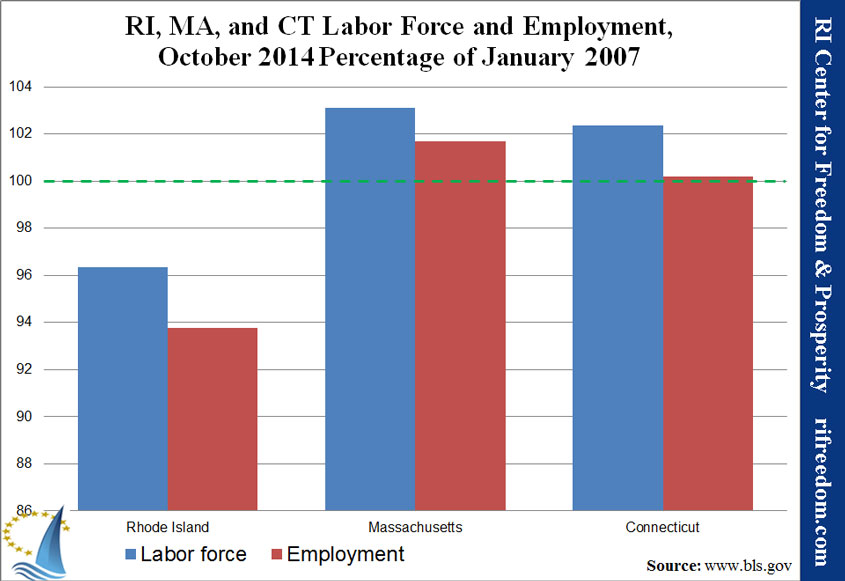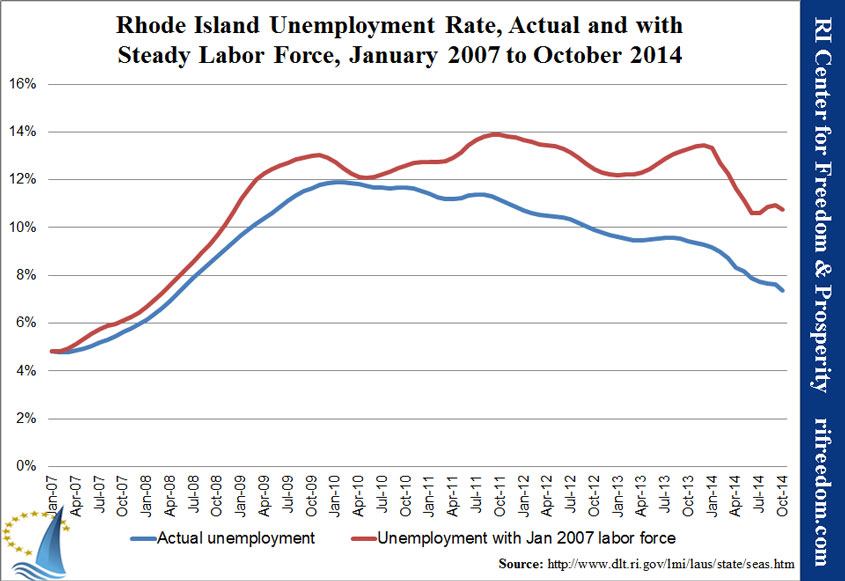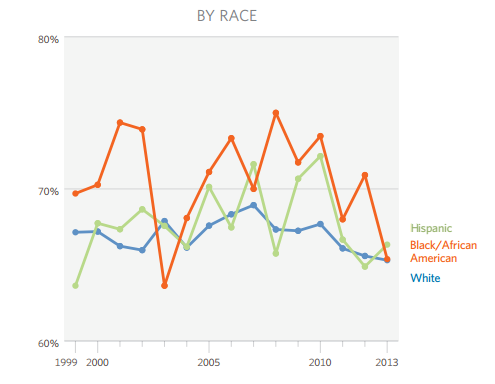Rhode Island Employment Snapshot, May 2015: Hockey Sticks and Cliff Jumping
[Click here for the printable one-page PDF of this post.]
The headline news is that Rhode Island’s unemployment rate dipped below 6% in May for the first time since November 2007, according to the federal Bureau of Labor Statistics (BLS). For some perspective, a fifth grader grinding out the space between Thanksgiving and Christmas when the Ocean State’s unemployment rate left the 5-6% range behind was preparing to graduate from high school when it slipped the other way.
Improvement in Rhode Island’s employment numbers has been a long slog, and as recently as this October, the unemployment rate was still over 7%. In late 2013, the unemployment rate began falling about a full percentage point every six months, roughly. The big difference of the last six months, as the first chart below shows, is that the reason isn’t that the labor force kept disappearing. We’re in hockey-stick territory, now. (That is if one believes the numbers; these first-half boosts have tended to be revised down significantly.)
The second chart shows that Rhode Island remains far behind its neighbors when it comes to recovering lost employment. Both Connecticut and Massachusetts are now well above their labor force and employment rates as of January 2007, while Rhode Island isn’t even close. For those two states, however, the increase in employment and (especially) labor force is not quite as recent a development.
The third chart shows how peculiar the numbers actually are. Both labor force and employment are supposed to come independently from survey data, pegged to certain benchmarks, but the blue line, which shows the actual employment data, presents a smooth downward curve. The red line shows what the curve would have been if the labor force had not shrunk since January 2007, and it ends in a conspicuous cliff.
In May, unemployment would still have been 8.9%. More tellingly, though, it would still have been 11.0% as recently as December.

